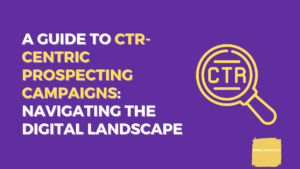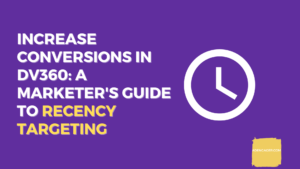SSPs vs DSPs: Understanding the Key Differences in Programmatic Advertising

As someone who’s been in the digital advertising space for over 5 years, I’ve seen the rapid growth and evolution of programmatic advertising firsthand. It wasn’t long ago that buying and selling digital ads was an extremely manual process. But the emergence of real-time bidding changed everything – allowing ads to be purchased and displayed to the right users at the perfect time, all within milliseconds.
This revolution was enabled by sophisticated supply-side and demand-side platforms, now commonly referred to as SSPs and DSPs. On the supply-side, SSPs enabled publishers to make their ad inventory available programmatically versus having to rely on direct sales. Through SSPs, publishers can connect to demand sources across a range of ad exchanges and networks. On the demand-side, DSPs allowed advertisers to seamlessly integrate their campaigns and bid on available ad impressions to reach their ideal audiences. Instead of negotiating placements and prices directly with publishers, advertisers could leverage the targeting power and efficiencies DSPs provide.
Within a relatively short period of time, SSPs and DSPs have profoundly reshaped how digital advertising is bought and sold. Their emergence has enabled brands and publishers of all sizes to capitalize on the possibilities of real-time, data-driven advertising. As programmatic continues to evolve, the capabilities and footprint of SSPs and DSPs will only continue to grow.
What are Supply-Side Platforms (SSPs)?
Having worked with numerous publishers and SSPs over my career, I’ve seen firsthand the immense value SSPs unlock for publishers. At their core, SSPs allow publishers to make their valuable ad inventory available programmatically across a myriad of demand sources, including ad exchanges, networks, DSPs, and even direct advertisers. This automated distribution is far more efficient than relying on manual direct sales outreach.
The top SSPs provide publishers access to high-quality demand, both through private marketplace deals and open auctions. This demand density increases competition for each impression, helping publishers maximize yields.
But SSPs aren’t just about piping inventory into exchanges. The best platforms provide publishers with robust ad decisioning capabilities. Publishers can set customized floor pricing, enforce competitive separation, and define packaging rules to optimize campaign delivery. And with integrated ad targeting, they can surface relevant impressions that fetch higher CPMs.
SSPs also equip publishers with an array of value-added capabilities – from brand safety tools, viewability trackers, and consent management platforms. By consolidating these services within their SSP, publishers can operate more efficiently and focus less on tedious ad ops work.
With programmatic advertising now accounting for the majority of digital ad spending, a strategic SSP partnership is absolutely essential for publishers looking to thrive in this fast-evolving ecosystem.
What are Demand-Side Platforms (DSPs)?
As someone who has managed advertising campaigns using a variety of DSPs, I’ve gotten a firsthand look at how demand-side platforms have evolved to meet the needs of today’s advertisers. At their core, DSPs empower advertisers to buy ad inventory across exchanges and networks programmatically using real-time bidding. This automated approach is far more efficient than old-school manual media buying.
With a robust DSP, advertisers can integrate their own first-party data and leverage detailed consumer insights to power campaigns. The platforms make it easy to build audience segments based on demographics, interests, behaviors – virtually any attribute imaginable. Advertisers can then use these audiences to bid only on the ad impressions that matter most to them.
The level of targeting available through DSPs today is incredibly precise. Advertisers can layer on multiple data points to reach narrow slices of their target market. For example, a retail advertiser could identify women between 25-35 who have browsed athletic shoes in the past 30 days and serve ads across devices as they read content related to fitness and running. This level of personalization and coordination across channels is only possible with a capable DSP.
And it’s not just large advertisers taking advantage of DSPs. Many platforms now offer self-serve options, allowing smaller budgets to access the same capabilities. Whether managed service or self-serve, DSPs provide a centralized hub to activate data-driven campaigns at scale.
Advertisers can monitor performance in real-time and make optimizations to improve results. DSPs also integrate with other elements of the ad tech stack like analytics, customer data platforms, creative optimization and more. For savvy advertisers, DSPs are the control center powering their programmatic strategies.
Key Differences Between SSPs and DSPs
| Aspect | Supply-Side Platforms (SSPs) | Demand-Side Platforms (DSPs) |
| Definition | SSPs are technology platforms that operate on the supply side of programmatic advertising, helping publishers manage and sell their ad inventory. | DSPs are technology platforms that operate on the demand side of programmatic advertising, assisting advertisers in buying and managing ad inventory. |
| Primary Focus | Focus on helping publishers maximize the monetization of their digital advertising inventory. | Focus on helping advertisers efficiently purchase and manage digital advertising inventory to reach their target audience. |
| Publishers’ Main Partners | Publishers, content creators, and website owners who want to sell their ad space and impressions. | Advertisers, marketing agencies, and brands seeking to reach their target audience through digital advertising. |
| Ad Inventory Management | Aggregate ad impressions and available ad space from publishers. | Aggregate and manage advertiser demand, budgets, and audience data. |
| Connections and Integrations | Connect supply-side inventory to various ad exchanges, ad networks, and demand sources to maximize ad revenue. | Connect with ad exchanges, ad networks, and supply sources to access a wide range of ad inventory for their campaigns. |
| Optimization | Optimize yield for publishers by maximizing ad fill rates and revenue through real-time bidding and ad network optimization. | Optimize campaign performance for advertisers by targeting the right audience, managing bids, and measuring results. |
While SSPs and DSPs play complementary roles in the programmatic ecosystem, their focus and incentives differ given they operate on opposite sides of the market. SSPs aggregate ad inventory supply, while DSPs aggregate advertiser demand. By understanding these core differences, it becomes clearer how SSPs and DSPs interact to facilitate the programmatic buying and selling of digital advertising.
Role in the Programmatic Ecosystem
Supply-Side Platforms (SSPs)
SSPs play a crucial role on the supply-side of programmatic advertising. Their core purpose is to help publishers monetize their ad inventory through automated selling. SSPs provide the technology to connect a publisher’s ad server and inventory to multiple demand sources, including:
- Ad Exchanges – SSPs pipe inventory into exchanges which facilitate super fast real-time auctions matching demand to supply. Top SSPs will connect publishers to major exchanges like Google AdX, AppNexus, and Rubicon.
- Demand-Side Platforms – SSPs also provide direct pipelines of inventory to DSPs, enabling them to bid on impressions on behalf of advertisers.
- Ad Networks – In addition to exchanges and DSPs, SSPs grant access to networks which aggregate inventory across sites into audience and contextual segments which advertisers can target.
- Direct Deals – SSPs enable publishers to execute direct buying deals with select advertisers through private auctions and preferred deals. This allows publishers to reserve certain inventory for premium buyers.
On top of distribution to demand sources, SSPs also provide an array of publisher-facing tools:
- Ad decisioning – SSPs allow publishers to set floor pricing, enforce competitive separation, optimize waterfalls, and define packaging rules to maximize yield.
- Reporting – SSPs provide publishers with real-time reporting on impressions, revenue, fill rate, and bidding dynamics to optimize their programmatic performance.
- Audience Targeting – Leading SSPs offer audience segmentation and targeting capabilities to help publishers unlock higher CPMs for their inventory.
- Brand Safety – SSPs provide tools to block prohibited content, blacklist certain advertisers, and enforce contextual targeting.
By leveraging a full-featured SSP, publishers can easily connect to all relevant demand sources and maximize programmatic revenue.
Demand-Side Platforms (DSPs)
On the other side of the ecosystem are Demand-Side Platforms which serve advertisers and agencies. The core function of DSPs is to allow buyers to purchase digital ad inventory through automated, real-time bidding (RTB). DSPs provide advertisers with a centralized platform to:
- Access Inventory – DSPs are integrated with all the major ad exchanges, SSPs, and networks to provide access to vast sources of display, video, mobile, native, and other inventory types.
- Leverage Data – DSPs enable advertisers to utilize their first and third-party data for precise audience targeting and personalization. Sophisticated machine learning further optimizes targeting over time.
- Activate Campaigns – DSPs make it fast and efficient for advertisers to launch and optimize campaigns across channels, inventory sources, and publishers. All campaign management happens in one centralized interface.
- Real-time Bidding – With DSPs, advertisers can leverage real-time data to bid on ad impressions as they become available across the web. This allows for advanced automation based on who is seeing an ad in the precise moment.
- Reporting – DSPs provide robust reporting on campaign performance, attribution, frequency, brand safety metrics, and audience insights to enable optimization.
Together this enables advertisers to execute sophisticated, automated media buying at massive scale to engage their best customers and prospects. DSPs are the control center for advertisers to harness the power of programmatic.
Ad Exchanges
Ad exchanges sit between SSPs and DSPs, connecting ad supply and demand. Exchanges operate real-time bidding auctions to transact ad impressions. Major ad exchanges include Google AdX, AppNexus, Rubicon, Index Exchange. On the supply-side, SSPs pipe inventory into exchanges to make it available for auction. The exchange then provides access to this supply for demand-side DSPs.
When an impression is served to a user, the exchange runs a super fast auction facilitating bids from different DSPs. Whichever DSP submits the highest bid wins the auction and has their ad instantly served to the user, as long as the bid meets the publisher’s minimum floor price. This all happens in just milliseconds!
By providing a centralized marketplace to match supply and demand, exchanges unlock immense efficiency for programmatic advertising. The real-time capabilities enable fine-tuned automation and site-level optimization by advertisers and publishers alike.
Ad Networks
Ad networks aggregate inventory supply from hundreds or thousands of sites and publishers. They package this supply into audience and contextual segments which they provide access to for advertiser DSPs. Major ad networks include Google Display Network, Yahoo Ad Network, Adform, and OpenX.
The main difference from exchanges is ad networks conduct auctions ahead of time without individual user data. So they are selling grouped audience segments rather than impressions targeted to specific users in real-time. This can provide more scale for broader campaigns but less precision compared to real-time bidding.
Ad Servers
The publisher ad server is the final piece which serves the actual ad file onto the publisher page for the user to see. Google Campaign Manager, Sizmek, and Freewheel are top ad server solutions. The ad server receives the winning ad file from the advertiser DSP and instantly serves it on the site where the impression is rendered.
Beyond ad serving, publisher ad servers provide detailed reporting on campaign delivery and inventory performance. This allows SSPs and publishers to monitor fill rates, revenue, and other metrics to optimize their programmatic yield.
So in summary, SSPs, DSPs, exchanges, networks, and ad servers all fulfill crucial roles in the complex, fast-paced programmatic advertising ecosystem. By seamlessly interacting, these platforms drive efficient automated media buying and selling at massive scale on the modern internet.
Top SSPs and DSPs
Supply-Side Platforms (SSPs)
- Google Ad Manager – As the largest SSP, Google still provides massive demand and advanced capabilities, but now faces more competition from other SSPs.
- Magnite – Created via a merger of Rubicon Project and Telaria, Magnite is known for video/CTV strengths but also offers a full suite of omnichannel inventory.
- PubMatic – A leader in mobile app and OTT inventory, PubMatic continues to expand its capabilities across CTV, video, and display channels.
- Rubicon Project – A header bidding pioneer, Rubicon also provides a strong marketplace for video, CTV, and display inventory.
Demand-Side Platforms (DSPs)
- Google DV360 – The leading DSP by market share, but facing stiffer competition. Excellent for Google-owned inventory and exclusive youtube inventory.
- The Trade Desk – Industry leader with advanced data-driven targeting, moving beyond just display into video and CTV as well.
- MediaMath – A programmatic pioneer but losing some ground recently, still strong in optimization and attribution capabilities.
- Amazon DSP – The newest major DSP option, growing share rapidly. Ideal for Amazon-owned properties and consumer data.
Pricing and Fees of SSPs and DSPs
Supply-Side Platforms (SSPs)
Revenue Share – The typical range is 10-25% of gross revenue generated through the SSP. Large publishers can negotiate down to 10-15%, while smaller publishers may pay 20-25%.
Minimum Fees – Range from $500-$1500 per month. Ensures the SSP generates a minimum amount each month.
Setup Fees – Can be $5,000 or more for initial implementation, testing, and onboarding.
Add-On Fees – Additional fees for value-added services like viewability tracking, fraud prevention, etc.
Demand-Side Platforms (DSPs)
Percent of Media – Fees based on a percentage of total media dollars spent through the DSP, typically in the range of 20-30%.
Minimums – Most DSPs require a minimum monthly or annual ad spend, often $10,000 or more.
Setup Fees – One-time fees for initial implementation and onboarding, which can be over $10,000.
Data Fees – Incremental fees for onboarding first-party data into the platform.
Managed Service – Additional monthly fees if full-service campaign management is utilized.
Add-Ons – Fees for add-on capabilities like multi-touch attribution, custom integrations, and reporting.
While base models are percent of spend for DSPs and revenue share for SSPs, overall pricing can vary based on publisher/advertiser scale, supply dynamics, and negotiated discounts. But these core fee structures provide an overview of how SSPs and DSPs are monetized.
Evaluation Criteria for Selection
Both for publishers I’ve worked for and agencies managing client ad budgets, there are a few key factors I always advise looking at closely during the selection process.
For SSPs, access to high quality demand isabsolutely essential. You want an SSP partner that’s integrated with all the major DSPs, exchanges, and networks out there. This brings more competition to your impressions, pushing up pricing and revenue.
Robust targeting capabilities are also important. The best SSPs empower publishers to create differentiated audience segments that command much higher CPMs compared to generic impressions. Segmenting by demographics, behaviors, content types, etc. unlocks real value.
Brand safety is huge too. Make sure your SSP has customizable tools to block shady inventory sources, blacklist offensive advertisers, and enforce positive contextual targeting. This protects your reputation with readers.
For evaluating DSPs, inventory access is just as crucial. You want your DSP partner to provide access to premium SSPs, exchanges, and publisher inventories so you can reach the users that matter most for your campaigns.
Targeting precision is another biggie. Look for sophistication in how audiences are built/managed, along with smart AI that optimizes right down to the placement level over time.
And you can’t forget auction dynamics. Having platforms that can adjust bids to hit your KPIs based on real-time signals is so valuable. This takes programmatic from spray and pray to highly calculated optimization.
There are plenty more nuanced selection factors of course. But overall, demand, targeting, brand safety for SSPs and inventory, targeting, auction capabilities for DSPs will carry you far. Focus there and you’ll find partners that align with your programmatic strategies and move the needle.
Conclusion
So, Publishers who leverage SSPs are able to drive significantly higher revenue from their ad inventory compared to relying solely on manual direct sales. Having a platform that instantly connects your impressions to countless demand partners unlocks immense efficiency. And tools that enable more thoughtful impression-level monetization, like floor pricing and inventory packages, provide a revenue turbocharge.
On the other side of the ecosystem, DSPs have been a game changer for advertisers small and large. The ability to implement sophisticated tactics like retargeting across sites and precise audience targeting using CRM data is only possible with DSPs. And the fact that smaller brands can now access enterprise-level programmatic capabilities is so empowering.
But what’s most remarkable is how interconnected SSPs and DSPs have become. As an advertiser, I can log into my DSP and place bids on the very same impressions a publisher friend just made available in their SSP. The real-time synchronization facilitates billions of these split-second auctions daily.
So while SSPs cater to publishers and DSPs cater to advertisers, their symbiotic relationship enables the fast, efficient, and vastly complex modern-day programmatic marketplace. Buyers get perfectly targeted audiences, sellers maximize yield – it’s a win-win. SSPs and DSPs may operate on different sides, but their impact is felt across the ecosystem.






